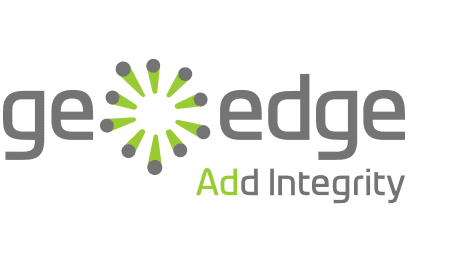CTV is experiencing a surge in growth that’s nothing short of astounding. As often happens when a digital market is in a rapid expansion phase, CTV is becoming a hotbed for potential brand safety and ad quality issues. To ensure an engaging CTV ad experience, the industry must lean on technology to achieve full programmatic transparency and brand safety.
A wealth of quality content, a wave of ad spend
The years-long cord cutting trend has now created a marketplace of CTV viewers that is larger than the total audience in linear TV. Advertisers have been shifting spend, gradually but steadily, from linear to CTV, which will make CTV a $23 billion ad market by 2026.
It isn’t only traditional broadcasters angling to monetize their video libraries via streaming services. Because of the CTV space’s voracious appetite for content and ad inventory – demand for CTV inventory exceeds supply today – and the ease of access provided by developments like FAST (free ad-supported TV), a wide array of publishers that own video content are now able to distribute and monetize their video across streaming platforms.
To meet the demand, billions of dollars are coming through programmatic advertising channels – to the extent that programmatic CTV now touches 98% of connected households in the US.
The human eye alone can’t inspect the sheer volume of ads in anywhere close to real time. With automated ad transactions occurring at scale, there is also a need for automated quality control.
Who’s in that audience, anyway?
Ad quality presents obstacles in CTV for publishers, platforms and advertisers alike. The influx of new demand brings with it a troubling amount of off-brand and off-spec ad content. Whether the creative is wrong and inappropriate for the audience, or wrong on a technical level for the ad unit, unwanted ads create disruptive ad experiences that negatively impact user experience and engagement.
Audience appropriateness can be challenging to ensure through programmatic CTV channels, due to the common nature of co-viewing and password-sharing. When the whole family is viewing together on the largest screen in the home, it becomes essential to deliver advertising suitable for all viewers.
For advertisers, platform fragmentation, siloed data, and inconsistent content categorization all inadvertently dilute ad targeting efforts, and lead to their ads running on content that would create negative impressions of their brands.
Taking the lead on CTV brand safety
Brand safety risks in CTV aren’t merely a force of nature. These issues are preventable through technology that accurately categorizes creatives.
Inappropriate, brand-unsuitable creative makes its way into CTV ad slots for a number of reasons. In most cases, the advertiser is legitimate, but their campaigns are categorized inaccurately or insufficiently. In other cases, the advertiser has intentionally miscategorized their campaigns in order to infiltrate high-quality media environments.
Understand risks to look out for
For publishers, the reputation of their own brand, and the trust and loyalty of their own audiences, are at very real risk whenever they run ads that break the viewer’s attention and take them out of their experience with the content. The CTV ecosystem is rife with campaigns launched by off-brand advertisers – campaigns that are inappropriate for the audience or content, and that may even be deceptive in nature. Some of the types of ad content that commonly put publishers on guard include:
- Political content
- Sexually suggestive or explicit images or text
- Gambling
- Smoking or vaping
- Marijuana
- Weapons or violent behavior
- Unapproved supplements
- Misleading product offers
In some cases, brand safety and suitability risks take the form of ads that clearly don’t flow consistently with the video content. Experiences that take the viewer out of the moment include:
- Loud ads
- Mismatched video frame rate or bit rate
- Inconsistent aspect ratio
- Inappropriate length of creative
- Heavy, slow-loading creative files
Be comprehensive – video, audio, text, semantics
Ensuring engaging ad experiences efficiently, across an entire site or app – will always require close inspection of the ad creative. In CTV, this presents a particular technological challenge, because CTV includes audio and video, and video is composed of countless still images. Effective ad quality solutions must scan video frames, the audio and the transcript, text in the images, and the ad’s landing page when applicable. This is a considerable tech lift, utilizing advanced contextual analysis and machine learning to evaluate the nuances of the language and recognize inappropriate images in real time.
To protect their own brand and reputation, encourage advertisers to spend more, and provide a seamless ad experience to audiences on any platform or device, publishers and platforms need to take advantage of tech solutions that can ensure appropriate and efficient ad/content alignment.
Here’s how they can get started:
- Look for solutions that can consistently detect the right ad specs for the right ad unit, and flag disruptive off-spec ad creative.
- Make use of ad quality solutions that deliver a verdict on brand safety- inspecting all aspects of the ad – video frames, audio, text in the frame, and landing pages – in multiple languages.
- Understand regulations, including COPPA, that dictate “age-appropriate” content. This can enhance targeting, while remaining compliant.
- Follow IAB content classification standards. Look into Content Object on OpenRTB, which allows publishers to categorize CTV content by attributes such as genre, series, theme, age appropriateness, and live versus pre-produced content.
CTV is flush with opportunities for ad revenue, and for closer relationships with advertisers. It shouldn’t be a brand safety obstacle course. It’s up to you to take the first steps toward safeguarding their audiences and deepening engagement!
SafeStream is the first solution safeguarding the CTV ad experience. It provides a clear verdict on creative quality, prevents disruptive experiences, and enforces brand safety and compliance.











